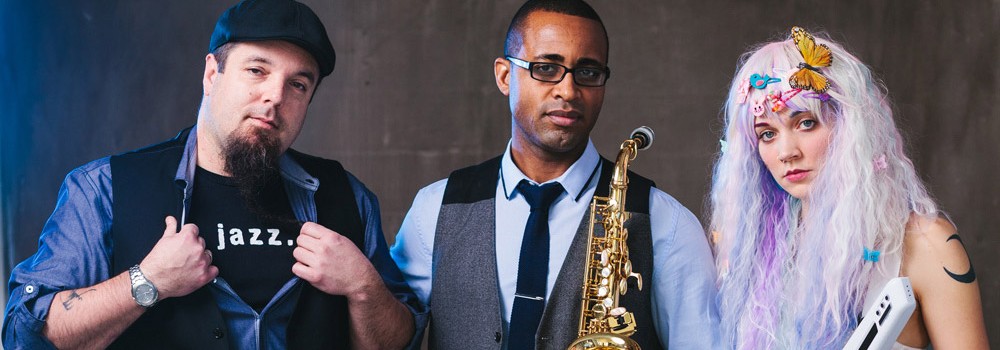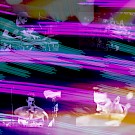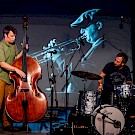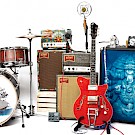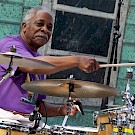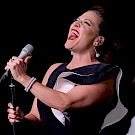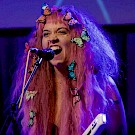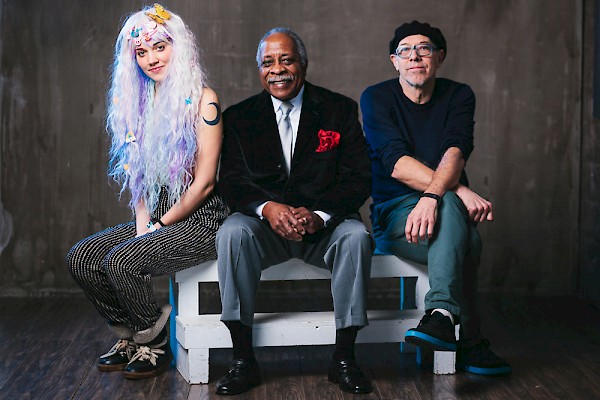 A few generations of Portland jazz: Coco Columbia, Mel Brown and Dan BalmerAmid the fuss and handwringing over the transformation of North Williams Avenue, there is also some measure of irony: Many of those decrying the recession and reconstitution of Old Portland in the inner northeast likely weren’t around to have seen it in the first place. Brunch patrons waiting outside Tasty n Sons may have a fleeting recollection of the Wonder Bread outlet that once met drivers at the Fremont Bridge’s eastside terminus, or perhaps a mnemonic snapshot of LV’s Twelve-22 and its endearing seediness. However, the names of the Cotton Club, Frat Hall, Jackie’s, and McClendon’s Rhythm Room will lie dormant, as will those of all the other dance halls and clubs that comprised “The Stem.” The proliferation of jazz venues that once lined Williams in the 1950s and ’60s and their collective performance histories could merit a Smithsonian display: John Coltrane performed there. So did Louis Armstrong, Duke Ellington, Thelonious Monk, Billie Holiday, Sammy Davis Jr., Nat King Cole and Etta James.
A few generations of Portland jazz: Coco Columbia, Mel Brown and Dan BalmerAmid the fuss and handwringing over the transformation of North Williams Avenue, there is also some measure of irony: Many of those decrying the recession and reconstitution of Old Portland in the inner northeast likely weren’t around to have seen it in the first place. Brunch patrons waiting outside Tasty n Sons may have a fleeting recollection of the Wonder Bread outlet that once met drivers at the Fremont Bridge’s eastside terminus, or perhaps a mnemonic snapshot of LV’s Twelve-22 and its endearing seediness. However, the names of the Cotton Club, Frat Hall, Jackie’s, and McClendon’s Rhythm Room will lie dormant, as will those of all the other dance halls and clubs that comprised “The Stem.” The proliferation of jazz venues that once lined Williams in the 1950s and ’60s and their collective performance histories could merit a Smithsonian display: John Coltrane performed there. So did Louis Armstrong, Duke Ellington, Thelonious Monk, Billie Holiday, Sammy Davis Jr., Nat King Cole and Etta James.
Before Portlandia, there was Jumptown. As with other elements of what is, in reality, Old Portland, jazz and its relative absence from the contemporary cultural dialogue may well represent a most egregious—and silent—crime of urban renewal’s wanton hand. In a city where music and local pride have become centerpieces of a swaying, top-heavy pedestal of identity, how is it that one of Portland’s genuinely homegrown and qualitatively worthy scenes can seem so overlooked? Irrespective of indie rock’s taught leash on our pop consciousness, Portland’s jazz musicians are still its finest: They’re the most skilled, the most informed, and at its best, the music they interpret and perform represents the latest chapter of one of our hallmark artistic traditions. So what does jazz in Portland sound like? And why haven’t we been listening?
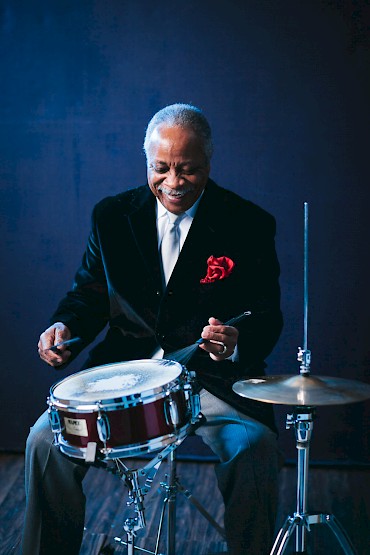 Mel Brown“I worked at the Cotton Club for a long time,” recalls Mel Brown. Now in his 70s and every bit the gracious professional who spent decades behind the drum kit in support of Motown legends like The Temptations, Diana Ross and Marvin Gaye, he still maintains a steady five-nights-per-week playing schedule. Brown is a testament to the identity of Portland jazz. Its foremost patriarch, he has borne witness to some six decades of evolution and reinvention. Looking back on his mentorship by a cadre of senior players, he remembers Sweet Baby James Benton, a local R&B singer who “lived around the corner from me. He took his garage and turned it into his own personal nightclub!” Likening Benton’s Shaver Street abode to a “testing ground,” Brown names trumpeter Bobby Bradford and trombonist Cleve Williams as further formative influences. “They’d say, ‘Listen to this record... to the way the drummer from Duke Ellington or Count Basie plays—this is how you set up the figures to play.’ They really helped me out a lot.”
Mel Brown“I worked at the Cotton Club for a long time,” recalls Mel Brown. Now in his 70s and every bit the gracious professional who spent decades behind the drum kit in support of Motown legends like The Temptations, Diana Ross and Marvin Gaye, he still maintains a steady five-nights-per-week playing schedule. Brown is a testament to the identity of Portland jazz. Its foremost patriarch, he has borne witness to some six decades of evolution and reinvention. Looking back on his mentorship by a cadre of senior players, he remembers Sweet Baby James Benton, a local R&B singer who “lived around the corner from me. He took his garage and turned it into his own personal nightclub!” Likening Benton’s Shaver Street abode to a “testing ground,” Brown names trumpeter Bobby Bradford and trombonist Cleve Williams as further formative influences. “They’d say, ‘Listen to this record... to the way the drummer from Duke Ellington or Count Basie plays—this is how you set up the figures to play.’ They really helped me out a lot.”
Like Brown, guitarist Dan Balmer came of age in the Williams Ave. clubs as they existed in the late ’70s. “Growing up here, I started integrating into the scene when I was 18 or 19,” he recalls. “I played at this club called Geneva’s for years that was on Williams. It was sort of after the old heyday, but it was a legitimate old jazz club with Ron Steen on drums.”
Now splitting time between regular gigs and teaching jazz guitar at Lewis & Clark College, when Balmer came up “the sound of Portland jazz, or the Northwest sound, was a contemporary jazz sound a lot like what I write, and what Tom Grant, Jeff Lorber and Dan Siegel wrote,” he explains. “Portland also had a good avant-garde scene at the time. And, of course, there have always been strong straight-ahead players.”
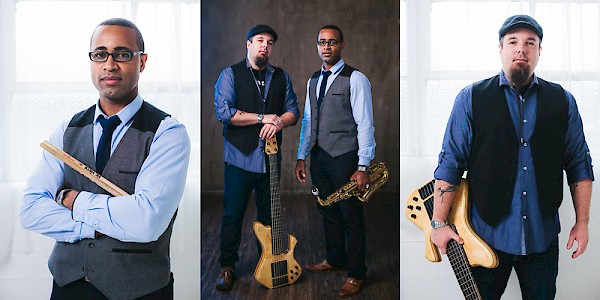 Drummer and alto sax player Christopher Brown and electric bassist Damian ErskinePortland’s tradition of mentorship, as well as the talent incubator that nurtured the likes of Balmer and Brown, has swelled to embrace a burgeoning community of musicians who have chosen to relocate here. The accessible, pretense-bereft environment was a principal attraction to Damian Erskine, a versatile electric bassist, clinician and Bass Player magazine contributor. Also the nephew of former Weather Report drummer Peter Erskine, bassist Erskine calls his 2004 cross-country move to Portland “one of the best things I ever did for my musical awareness and for my confidence level, too.” Portland has the talent, he says, “but also a laid-back attitude. In New York and Boston, it’s just so competitive. If you’re not cutting it, they want to take your head off. It’s got a brutality about it and I’ve never jived with that. But here, I felt really supported by the community. It was the first place I felt safe trying to play jazz.”
Drummer and alto sax player Christopher Brown and electric bassist Damian ErskinePortland’s tradition of mentorship, as well as the talent incubator that nurtured the likes of Balmer and Brown, has swelled to embrace a burgeoning community of musicians who have chosen to relocate here. The accessible, pretense-bereft environment was a principal attraction to Damian Erskine, a versatile electric bassist, clinician and Bass Player magazine contributor. Also the nephew of former Weather Report drummer Peter Erskine, bassist Erskine calls his 2004 cross-country move to Portland “one of the best things I ever did for my musical awareness and for my confidence level, too.” Portland has the talent, he says, “but also a laid-back attitude. In New York and Boston, it’s just so competitive. If you’re not cutting it, they want to take your head off. It’s got a brutality about it and I’ve never jived with that. But here, I felt really supported by the community. It was the first place I felt safe trying to play jazz.”
If Portland jazz has the tradition, the community and the players, why isn’t it more of a presence on yearly best-of lists, club marquees, and in the conversation about local music? “I don’t understand it,” Balmer says. “I wish I knew the answer. We have such tremendous young musicians and musicians who have moved here. In my opinion, the quality, sincerity, effort and validity have just gone up and up and up.”
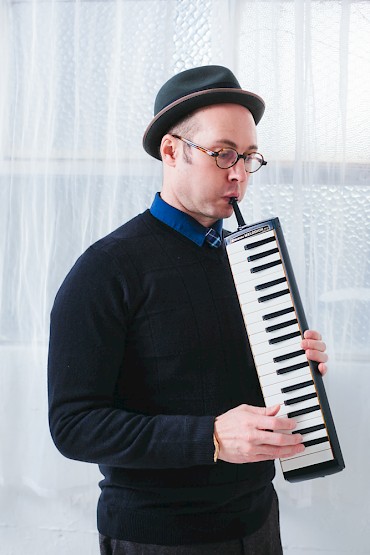 George ColliganWhere jazz seems to lack a more emphatic footprint in Portland, pianist George Colligan sees a broader disconnect. “I think it’s a big misunderstanding with jazz music,” surmises the Portland State professor and Jack DeJohnette collaborator. “There are academic people who feel that jazz is not academic enough. But then there are many listeners who feel like, ‘You have to understand so much. It’s too complicated for me!’ So, it kind of sits in this very strange place in our society, where people don’t really understand what it’s supposed to be.”
George ColliganWhere jazz seems to lack a more emphatic footprint in Portland, pianist George Colligan sees a broader disconnect. “I think it’s a big misunderstanding with jazz music,” surmises the Portland State professor and Jack DeJohnette collaborator. “There are academic people who feel that jazz is not academic enough. But then there are many listeners who feel like, ‘You have to understand so much. It’s too complicated for me!’ So, it kind of sits in this very strange place in our society, where people don’t really understand what it’s supposed to be.”
Specific to Portland, Colligan—a New York transplant himself—nevertheless observes inhibiting biases. “I think that the Portland jazz audience have their local favorites and I think they’re not used to being,” he pauses, “they don’t necessarily want to be challenged. They want to hear something that they know.” There is also a matter of priority: “It’s not necessarily the genre—it’s just what people want to do with their time.”
Colligan is not alone in his ruminations on the subject. Christopher Brown, the son of Mel Brown, an alto sax player and a first-call drummer whose playing résumé includes sessions with Chuck Israels, Randy Brecker and Esperanza Spalding, retells a definitive encounter with the challenge that Colligan sees so often shirked: “When I first heard Wynton Marsalis’ Black Codes (From the Underground), it completely brought me to a screeching halt. It represented a whole new level of excellence. I said to myself, ‘If I don’t try to address it, or try to pretend it doesn’t exist, it’s going to haunt me for the rest of my life because I know better. I know there’s something else out there.’ To not strive for it, it’s like me saying that I’m not a man, or that my skin isn’t the color that it is.”
That Portland is, inherently, a music city is something of a “saving grace” to Colligan. “That’s why I think there’s still potential in Portland. This is the music that hipsters should be listening to!” Perhaps he would find encouragement in the growing ranks of local musicians who have found success by borrowing from the jazz tradition or drawing on the comprehensive skill set and musical vocabulary instilled by jazz education, and in the process, stoking the next evolution of the discipline’s commensurate traditions of exploration and change.
 Coco ColumbiaSinger-songwriter Coco Columbia, who writes and performs an amalgam of pop-inflected jazz, hip-hop, R&B and ambient dream-pop (listen below), is a former student of drummer Alan Jones and an unabashed fan of everything from jazz heavyweights like Robert Glasper and Avishai Cohen to Kate Bush and Flying Lotus. Enrolled in the PSU jazz program before leaving to pursue her own ambitions, Columbia still looks to “use all the same sort of extensions that you hear in jazz,” referring to the peripheral tones imparting color and definition to major, minor and dominant chords. “The guys in my band all have jazz backgrounds,” she continues. “It’s just the style of playing. The skill set it takes to play that music is something that I want in a band, too.” Sight-reading skills—paramount to even an amateur pursuit of jazz—are a necessity. “I have to have people in my band who can read music and improvise. All these little things that I want are in the music that jazz musicians learn—they just go through that whole learning process.”
Coco ColumbiaSinger-songwriter Coco Columbia, who writes and performs an amalgam of pop-inflected jazz, hip-hop, R&B and ambient dream-pop (listen below), is a former student of drummer Alan Jones and an unabashed fan of everything from jazz heavyweights like Robert Glasper and Avishai Cohen to Kate Bush and Flying Lotus. Enrolled in the PSU jazz program before leaving to pursue her own ambitions, Columbia still looks to “use all the same sort of extensions that you hear in jazz,” referring to the peripheral tones imparting color and definition to major, minor and dominant chords. “The guys in my band all have jazz backgrounds,” she continues. “It’s just the style of playing. The skill set it takes to play that music is something that I want in a band, too.” Sight-reading skills—paramount to even an amateur pursuit of jazz—are a necessity. “I have to have people in my band who can read music and improvise. All these little things that I want are in the music that jazz musicians learn—they just go through that whole learning process.”
Could the genre-blending championed by popular artists like Frank Ocean and Kendrick Lamar, who enlisted the talents of Glasper and trumpet prodigy Ambrose Akinmusire for 2015’s To Pimp a Butterfly, present a roadmap for jazz’s popular reintegration? “Yeah,” Columbia replies. “And I think it’s really beautiful because it’s shining light on all these jazz artists who are amazing artists and aren’t getting a lot of attention in mainstream music. But then they’re playing on Kendrick Lamar’s album and they’re playing all these festivals—like Kamasi Washington, not because he isn’t a great musician, but because Kendrick sort of pulled him up.”
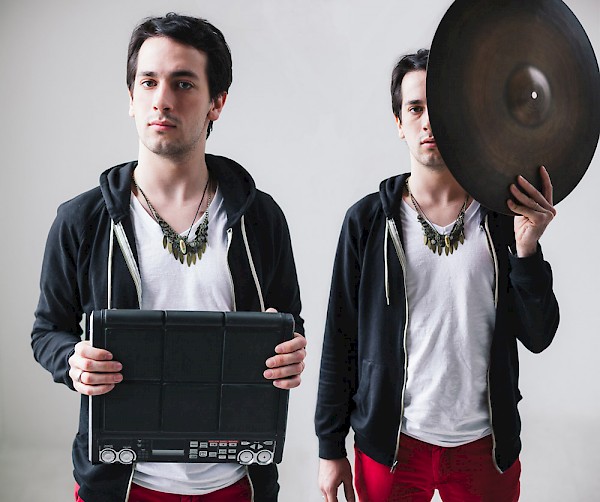 Barra BrownBarra Brown would agree. A 26-year-old drummer of multiple affiliations, Brown is a former student of Balmer’s and the Alan Jones Academy of Music, and tours with the Shook Twins when not pursuing a series of independent projects. Like those of Columbia, his tastes are typically variegated for a musician of his generation. He appreciates “good improvisers” who have studied backgrounds and observes that “hip-hop and jazz, and now jazz and pop music, are merging. Jazz musicians are spending more time playing live hip-hop music, and hip-hop musicians are wanting to use more live musicians than backing tracks. It’s coming together. And I think that’s where jazz is going.” Jazz was once popular music. “But now what’s popular music? Hip-hop,” he opines. “What’s the music that’s defining our generation? It’s hip-hop music.”
Barra BrownBarra Brown would agree. A 26-year-old drummer of multiple affiliations, Brown is a former student of Balmer’s and the Alan Jones Academy of Music, and tours with the Shook Twins when not pursuing a series of independent projects. Like those of Columbia, his tastes are typically variegated for a musician of his generation. He appreciates “good improvisers” who have studied backgrounds and observes that “hip-hop and jazz, and now jazz and pop music, are merging. Jazz musicians are spending more time playing live hip-hop music, and hip-hop musicians are wanting to use more live musicians than backing tracks. It’s coming together. And I think that’s where jazz is going.” Jazz was once popular music. “But now what’s popular music? Hip-hop,” he opines. “What’s the music that’s defining our generation? It’s hip-hop music.”
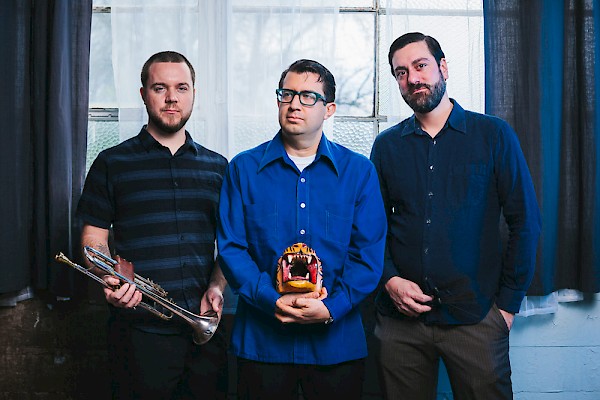 1939 Ensemble: Josh Thomas, Jose Medeles and David ConiglioJazz’s overriding freedom has also inspired several other Portland acts who have found success in the context—or in spite—of the predominant indie climate. “The first jazz drummer I really dove into was Gene Krupa,” says Jose Medeles, the owner of Revival Drum Shop and a founding member of 1939 Ensemble. A tenured session drummer for a spectrum of rock acts like Ben Harper and Joey Ramone, he also spent 12 years with Pixies bassist Kim Deal in the second iteration of The Breeders. But his latest band’s “adventurous spirit” shines through the unrestrained tenor of jazz’s influence. “With ’39,” Medeles says, “I feel like there’s really no arrested development with our sound. That’s what makes it exciting for me and the other guys in the band. I didn’t think the jazz side of what we do would connect with jazz people, but it really has. KMHD has welcomed us with open arms, and it’s really great when we can play with Medeski Martin & Wood, BADBADNOTGOOD and Marc Ribot and have them be like, ‘Man, you guys are really great.’ It just gives us affirmation to know that.”
1939 Ensemble: Josh Thomas, Jose Medeles and David ConiglioJazz’s overriding freedom has also inspired several other Portland acts who have found success in the context—or in spite—of the predominant indie climate. “The first jazz drummer I really dove into was Gene Krupa,” says Jose Medeles, the owner of Revival Drum Shop and a founding member of 1939 Ensemble. A tenured session drummer for a spectrum of rock acts like Ben Harper and Joey Ramone, he also spent 12 years with Pixies bassist Kim Deal in the second iteration of The Breeders. But his latest band’s “adventurous spirit” shines through the unrestrained tenor of jazz’s influence. “With ’39,” Medeles says, “I feel like there’s really no arrested development with our sound. That’s what makes it exciting for me and the other guys in the band. I didn’t think the jazz side of what we do would connect with jazz people, but it really has. KMHD has welcomed us with open arms, and it’s really great when we can play with Medeski Martin & Wood, BADBADNOTGOOD and Marc Ribot and have them be like, ‘Man, you guys are really great.’ It just gives us affirmation to know that.”
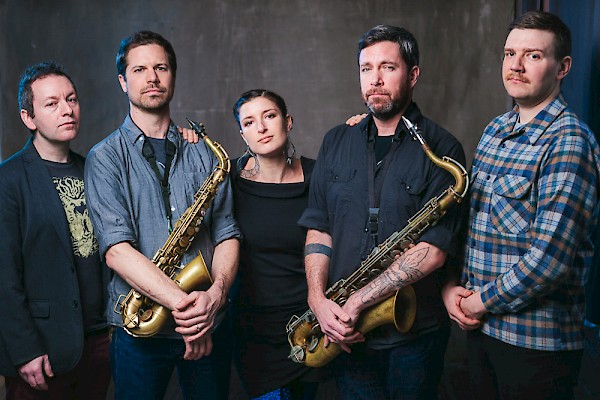 Blue CranesLike Coco Columbia and 1939 Ensemble, others have found success both within and beyond Portland’s immediate jazz landscape. Acts like the noise-jazz duo GRAMMIES and instrumental five-piece Blue Cranes have made inroads with respect to bridging the demographic and stylistic divisions segregating Portland’s indie and jazz scenes. Alto saxophonist Reed Wallsmith relates Blue Cranes’ appeal to their fusion of jazz influences with the likes of Elliott Smith and Townes Van Zandt. To Wallsmith, “[Jazz] gives people the opportunity to express themselves and also to create something larger as a group. And because improvisation is central to jazz, it provides a vehicle to celebrate a moment that’s never going to happen again. It’s a celebration of the ephemeralness of life.”
Blue CranesLike Coco Columbia and 1939 Ensemble, others have found success both within and beyond Portland’s immediate jazz landscape. Acts like the noise-jazz duo GRAMMIES and instrumental five-piece Blue Cranes have made inroads with respect to bridging the demographic and stylistic divisions segregating Portland’s indie and jazz scenes. Alto saxophonist Reed Wallsmith relates Blue Cranes’ appeal to their fusion of jazz influences with the likes of Elliott Smith and Townes Van Zandt. To Wallsmith, “[Jazz] gives people the opportunity to express themselves and also to create something larger as a group. And because improvisation is central to jazz, it provides a vehicle to celebrate a moment that’s never going to happen again. It’s a celebration of the ephemeralness of life.”
“The old, traditional jazz world is shrinking while jazz is expanding outward into most everything,” explains Noah Bernstein of GRAMMIES. “A lot of [modern] jazzers don’t want to be called jazz, and all the pop artists want to openly have jazz influence to lend their music credibility, or just to have talented, versatile musicians around them. In the end, the concept of jazz is doing great and you can hear it just about everywhere.”
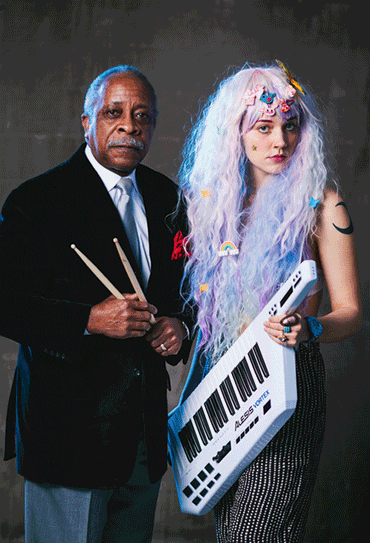 Father and son Brown with Coco ColumbiaBy all accounts, jazz in Portland has many faces—and now perhaps even more sounds. From those of a supreme, sartorially immaculate vet personally sought by George Harrison for percussive accompaniment on “My Sweet Lord,” to a violet-haired, 25-year-old upstart who learned to sing by vocalizing to Erykah Badu’s Baduizm, diversity may be the defining facet of Portland jazz as it exists in 2016; an identity whose roots run deep and whose fruits are perennial.
Father and son Brown with Coco ColumbiaBy all accounts, jazz in Portland has many faces—and now perhaps even more sounds. From those of a supreme, sartorially immaculate vet personally sought by George Harrison for percussive accompaniment on “My Sweet Lord,” to a violet-haired, 25-year-old upstart who learned to sing by vocalizing to Erykah Badu’s Baduizm, diversity may be the defining facet of Portland jazz as it exists in 2016; an identity whose roots run deep and whose fruits are perennial.
It is almost 11:30 p.m. and Mel Brown is slipping his cymbals into one of a handful of black bags arranged before him—the latest in a decade-plus run of Friday gigs at Salty’s is complete. In our time of aural oversaturation, why does Portland need jazz? In between dashes of pinot noir, he replies, “Because it is Portland. Portland wouldn’t really be the music city that it is if we didn’t have jazz. You think about the size of Portland and the size of Seattle—can you go to Seattle and say there’s a heavy jazz scene? No. What do they say about Portland?” He lightly sets down his drink. “It’s the jazz scene—that’s our signature.”

